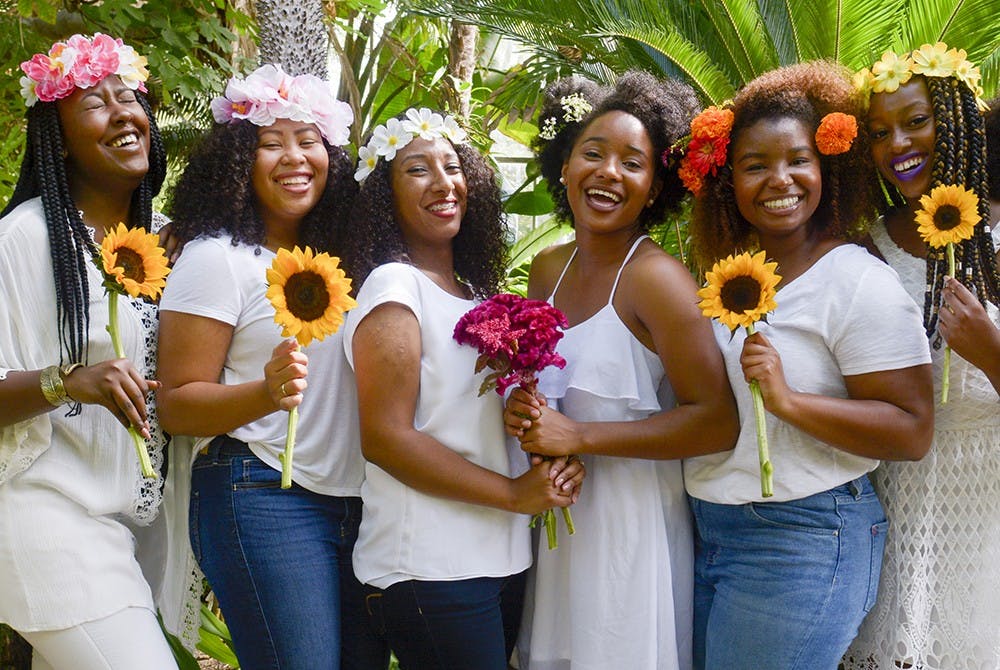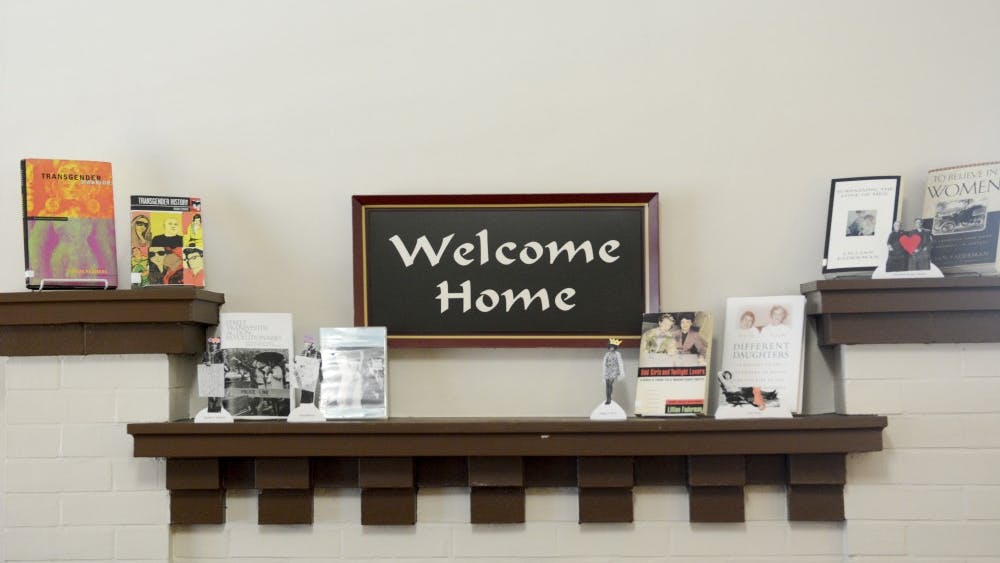Hair that incredibly and beautifully defines gravity.
Today, more black millennial women are choosing to wear their hair chemical-free. In other words, ‘going natural.’ Hair is a basic feature almost everyone has or has had in their lifetime. For many, it is a way of self-expression and identity. Hair for many generations has been aligned with Western beauty standards in appearance and upkeep. In Western society, the norm for women is straight, long and downward growing hair. To fit into this mold and to avoid discrimination, most black women in the past have chemically straightened their hair, installed extensions or weaves and styled their hair in many other fashions. In this new era black women are taking ownership of their hair. If they choose to wear extensions or their natural hair, it is through their doing and no one else’s. The beauty of black hair is diversity. From weaves to braids, the styles and techniques are endless. Even within natural hair there is diversity in hair texture and curl patterns. We at INSIDE reached out to 7 young women to tell their stories on why they wear their hair natural and their natural hair journeys.
***
“I’ll get made fun of ‘cause I had natural hair in sixth grade,” Benita Mwintshi.
From a young age, Benita, a senior at IU, transitioned from natural hair to relaxed hair then back again. This cycle continued until she was in high school and decided to go relaxer free forever. She relied heavily on protective hair styles. These are styles like braids, twists and cornrows that protect natural hair from breakage, dryness and helps with growth. Benita believes her hair journey was made easier because of YouTube — the unexpected secret weapon for most black girls discovering new hair styles and tricks. There is a huge online community for black hair. From which hair products work best for natural hair to hair extensions reviews, this community is build on everyday individuals sharing what works for them and hoping it works for their viewers and readers.
“YouTube taught me what to do with my hair; what products to use. However, I will be careful with some of the advice that is giving on YouTube,” Benita said.
Explaining what might work for someone’s hair is not guaranteed to work for you. Some advice Benita wish she had when she started going natural was, “don’t focus on fitting in but focus on being a better you,” she said.***
Not focusing on fitting in and doing what makes you happy is the same way, senior Sidney Harris lives her life. “Cutting it all off in the middle of tenth grade, getting all those comments, I became a very fearless person and I try to live my life as fearless and courageous,” Sidney said.
She has always loved her hair. She sees the hate of black hair from outside sources; The way people care more about lengthy hair than healthy hair. “Even in the natural hair community and all over YouTube is has become about consumerism. It’s all about length and texture. Texture discrimination is very real.” Sidney appreciates the online community and the way it has helped so many women care for their hair. As the community grows there can be a bias to what is seen as a “preferred texture,” which is hair with looser curl patterns. There are different hair textures and curl patterns and Sidney believes they should all be embraced and not put in a hierarchy.
In the past, black hair in it’s natural form was seen as a political and social statement. Sidney believes in some ways it still is. “When you possess and navigate a black body in America or arguable globally, everything you do is political. When you wake up and breathe that is revolutionary. When you are happy, when you are thriving, when you are moisturized that’s revolutionary,” Sidney laughed at the mention of being moisturized as revolutionary but the rest of her words were filled with passion.
***
“I was a lioness. It would just poof out. Nothing could tame my hair.” junior Lia Tewelde said. She has always kept her hair natural and this was not by her choosing. Her mother prevented her from chemically straightening her hair. It wasn’t until her junior year of high school that she began to appreciate her hair and thank her mother for being patience and caring for her hair.
Now, Lia mostly wears her hair curly instead of using a straighter to tame her curls. The main advice her mother gives her is to maintain her hair and make sure her curls are not too wild. Lia’s mother is afraid of how others that are not familiar with natural hair will react.
“She [her mother] feels it puts me in more risk to be targeted,” Lia said. Even though, Lia fears she will be treated differently in the future when she enters the workforce, she says the positives of wearing her hair natural is freeing. She is able to bond with others and build a great community because of it.
***
Growing up, Lia Tewelde wanted to permanently straighten her hair but wasn’t allowed to, on the other hand, senior Brailyn Davis didn’t want to permanently straighten her but had to.
“I wasn’t very good at doing my own hair so they were like, ‘you are getting a relaxer,’” Brailyn said. She didn’t mind getting a relaxer because everyone had one. She got a relaxer during her freshman year of high school and she noticed she was treated differently. She noticed people talked to her more and it was a different feeling. She also took part in competitive cheerleading and the hairstyles that were required caused her hair to break and shed. Over time, she stopped getting relaxers and her hair grew out in it’s natural form.
“I went natural on accident,” Brailyn said. When she stopped getting a relaxer and tried different protective styles like braids, her hair was growing out and she didn’t realize it.
“It was also a realization that I never needed a relaxer and I wasted that time of damaging my hair. When I could have been like thriving,” she said. “But it was a learning process and it made me understand different styles and it was cool to see how much my hair could do.”
Brailyn was fully natural her senior year of high school and she has been ever since. She sees her hair journey has a learning experience. She said she understands that sometimes black hair in it’s natural form can be taken has a political or social statement but most people wear their hair natural for themselves and not to prove a point.
***
Senior Precious Price was in the kitchen with her mother, grandmother and sister when she decided to cut her natural hair and start over.
“I’m so tired of dealing with my hair,” Precious said to her family about the thickness and length of her hair.
“Cut it,” her mother said. She helped Precious cut her hair, and after seeing chunks of her hair hit the floor, Precious started crying. But she said after a few days, she came to terms with the new look, which was about three inches short.
As a black, female student studying marketing and technology, she said her hair was the way Kelley peers identified her. She said if she changed her hairstyle and walked past them, they didn’t recognize her.
“For me, it’s more so allowing people to really get to know me, and not my hair, and that was a big piece in me cutting it as well,” Precious said. “Now you have no choice but to look at my face.”
Before this cut, she had been natural since the eighth grade when her mother, a cosmetologist and hair salon owner, made her stop getting relaxers.
Though Precious went natural before it grew popular, she said the amount of black women going natural has a lot to do surrounding the topic of “us versus them” and recent events of discrimination.
“We were told for so very long that we should look like this, act like this and be a certain group that we aren’t,” she said. “I feel like women, when I meet them in their natural, they embody that confidence that I feel every black woman should have, because they understand, kind of, who they are, where they’re going and they don’t care what anybody else thinks about it.”
***
Since Akeyla Jordan was about 5 years old, her mother paid for her to get perms, which is another term for relaxers. She got her hair styled at her aunt’s salon, who finally stopped getting relaxers and suggested she go natural. During her freshman year of high school, she decided to take her aunt’s advice.
When Akeyla, a senior, went natural, she wasn’t too sure of the process but decided to transition, or gradually trim off the relaxed hair. She would wear sew-ins— weave extensions — while she was transitioning, surpassing the curly roots combined with straight ends that most women encounter.
“Transitioning wasn’t bad but the first time I had my hair out after I finished transitioning and it grew out, I did not know what to do with my hair,” Akeyla said. “If I would have big chopped, I would have been more familiar with products I have to use, how to actually de-tangle my hair without ripping at my scalp and stuff. I think it would have been beneficial for me to do a big chop and kind of grow with my hair as it grew.”
Since Akeyla didn’t know much about dealing with her curls, YouTube tutorials about products and styling were her go-to. After trial-and-error, she figured out her own hair regimen.
Akeyla “pre-poos,” or does a pre-treatment before shampooing, with coconut oil the night before her wash day. She washes her hair in sections with Shea Moisture products. Then, she conditions/deep conditions (sometimes mixing the product with olive oil), then finger de-tangles her hair and proceeds to style it.
While Akeyla relies on protective styling to keep from damaging her hair, she feels like when she does wear her hair in its natural state, she’s making a statement.
“I feel like it just kind of shows that you’re okay with your identity; you’re okay with something you were born with it. You’re taking pride in that,” she said.
***
While Kealia Hollingsworth admired the natural look initially, she told herself she could never go without heat on her hair. Kealia, a senior, had been getting perms since she was about nine years old.
Kealia said she first noticed the growing trend of natural hair around the time the #BlackLivesMatter movement emerged in 2013, after Trayvon Martin’s death. But this didn’t change her mind about the way she wore her hair.
In 2014, Kealia’s sister told her how she hadn’t been using heat in her hair, encouraging Kealia to try it. Finally, she began transitioning in January 2015.
“I’ve had self-esteem issues and this decision and my sister empowering me to do it kind of made me feel more beautiful in a sense,” Kealia said. “Beautiful more than just in the face, inside and out.”
But her mother had mixed feelings about her hair in its natural state. Kealia said that she could tell her mother didn’t like the idea that her hair wouldn’t always be “tamed” or wouldn’t look neat to others because it was in an afro.
Kealia also said that her family thought that she was “woke,” or very aware of racial/social injustices, because of her hair change. She said that it may seem that way because of how different black hair is.
“It’s the only hair that grows in the way it does. It’s the only hair that comes out super curly or, and not everybody’s does,” Kealia said. “It’s different from Eurocentric ideas that everybody is used to so it’s a statement in a sense.”
Since being natural, she co-washes — washing with conditioner — or washes her hair once a week with Cantu or As I Am products. She will sometimes do a puff, braid-out or twist-out, and other times will opt for a protective style such as box braids or crochet braids.
Though Kealia is still learning about her hair, she encourages those who aren’t natural to just “try it out.” She also says it’s important for people who are already natural to keep going.
“I know it could be strenuous, where you’re like, ‘Oh my goodness. What am I about to do with my hair?’” she said. “Most of the time, most people’s natural hair is beautiful to me. It’s all different so don’t get tired of being natural. Embrace it all the time.”






